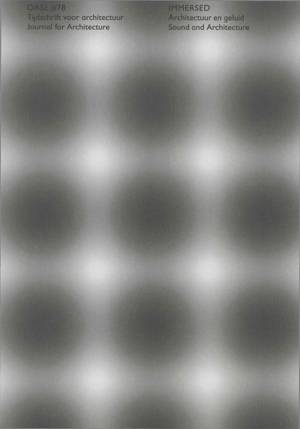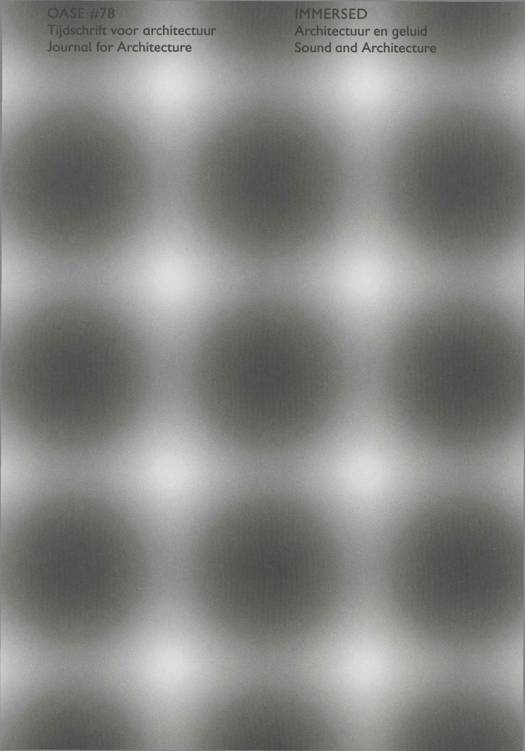
- Afhalen na 1 uur in een winkel met voorraad
- Gratis thuislevering in België vanaf € 30
- Ruim aanbod met 7 miljoen producten
- Afhalen na 1 uur in een winkel met voorraad
- Gratis thuislevering in België vanaf € 30
- Ruim aanbod met 7 miljoen producten
Zoeken
Omschrijving
Under the title Immersed, OASE 78 addresses space and sound. This issue presents a reflection on the spatial aspects of sound alongside an examination of the transformative and temporal dimensions of space.
Immersed concentrates on one specific side of the spatial experience, namely sound, presenting new theoretical insights as well as relevant case studies. Sound is a spatial event, a material phenomenon and an auditive experience rolled into one. It can be described using the vectors of distance, direction and location. Within architecture, every built space can modify, position, reflect or reverberate the sounds that occur there. Sound embraces and transcends the spaces in which it occurs, opening up a consummate context for the listener: the acoustic source and its surroundings unite into a unique auditory experience.
Recent studies into the ‘auditive’ dimension of various cultural practices have provided insights into experiential aspects that have heretofore remained underexposed. Some of these studies emphasize a critical reassessment of periods and positions, simultaneously suggesting modifications to our current understanding of space and place. Such developments are being seen across various disciplines, but they have not yet attained their full potential within the architecture debate. OASE 78 makes these disquisitions, which are often highly specialized, accessible for and available to the architecture discipline. By reflecting on the physical dimension of sound as well as on a conceptualization of space as transformable and periodic, OASE hopes to broaden the discussion about acoustics beyond purely technical aspects.
Immersed concentrates on one specific side of the spatial experience, namely sound, presenting new theoretical insights as well as relevant case studies. Sound is a spatial event, a material phenomenon and an auditive experience rolled into one. It can be described using the vectors of distance, direction and location. Within architecture, every built space can modify, position, reflect or reverberate the sounds that occur there. Sound embraces and transcends the spaces in which it occurs, opening up a consummate context for the listener: the acoustic source and its surroundings unite into a unique auditory experience.
Recent studies into the ‘auditive’ dimension of various cultural practices have provided insights into experiential aspects that have heretofore remained underexposed. Some of these studies emphasize a critical reassessment of periods and positions, simultaneously suggesting modifications to our current understanding of space and place. Such developments are being seen across various disciplines, but they have not yet attained their full potential within the architecture debate. OASE 78 makes these disquisitions, which are often highly specialized, accessible for and available to the architecture discipline. By reflecting on the physical dimension of sound as well as on a conceptualization of space as transformable and periodic, OASE hopes to broaden the discussion about acoustics beyond purely technical aspects.
Specificaties
Betrokkenen
- Uitgeverij:
Inhoud
- Aantal bladzijden:
- 144
- Taal:
- Meerdere talen
- Reeks:
Eigenschappen
- Productcode (EAN):
- 9789462087132
- Verschijningsdatum:
- 14/03/2022
- Uitvoering:
- E-book
- Beveiligd met:
- Digital watermarking
- Formaat:

Alleen bij Standaard Boekhandel
+ 14 punten op je klantenkaart van Standaard Boekhandel
Beoordelingen
We publiceren alleen reviews die voldoen aan de voorwaarden voor reviews. Bekijk onze voorwaarden voor reviews.







